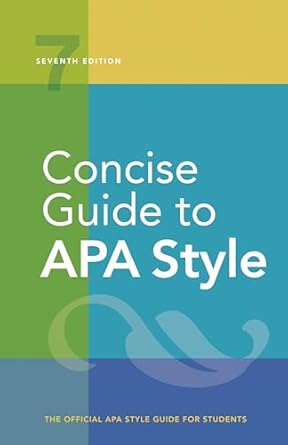[toc]
referencing guide citing sources correctly
Concise Guide to APA Style: 7th Edition (OFFICIAL)
Page 292 Review
The Importance of Proper Referencing: A Deep Dive into Academic Integrity
In the realm of academic writing, meticulous referencing is paramount.
It’s not merely a formality but a cornerstone of intellectual honesty and scholarly communication.
Proper referencing acknowledges the contributions of other researchers, demonstrates the breadth of your understanding, and strengthens the credibility of your work.
Ignoring or mishandling references can lead to plagiarism, which can have severe consequences.
This ebook excerpt provides valuable guidance on citing various sources, which is essential for students and researchers alike.
Policy Briefs: Shaping Public Discourse
Policy briefs are concise documents designed to inform policymakers and the public about specific issues and potential solutions.
The excerpt provides a clear example of how to cite a policy brief:
“Harwell, M. (2018).
Don’t expect too much: The limited usefulness of common SES measures and a prescription for change [Policy brief].
National Education Policy Center. https://nepc.colorado.edu/publication/SES
This demonstrates the structure required: Author, Year, Title, Type of document (Policy Brief), Publisher, and the URL.
As the example shows, both parenthetical citation “(Harwell, 2018)” and narrative citation “Harwell (2018)” are crucial for giving credit to the author and making the source easy to locate.
Press Releases: Communicating News and Information
Press releases are used by organizations to disseminate information to the public and media outlets.
Citing them correctly is crucial, especially when reporting on new developments or policy changes.
As demonstrated in the excerpt:
“U.
S.
Food and Drug Administration. (2019, February 14).
FDA authorizes first interoperable insulin pump intended to allow patients to customize treatment through their individual diabetes management devices [Press release]. https://www.fda.gov/NewsEvents/Newsroom/PressAnnouncements/ucm631412.htm
The format again involves the publishing organization, the date, the title of the press release, indication of the document type, and the URL.
Like policy briefs, both parenthetical “(U.
S.
Food and Drug Administration, 2019)” and narrative citations “U.
S.
Food and Drug Administration (2019)” are key.
The date is especially important to include in the citation, as press releases may be time sensitive.
Dissertations and Theses: The Foundation of Research
Dissertations and theses represent significant scholarly contributions and are often valuable sources of information.
The excerpt highlights the distinction between published and unpublished works:
“References for doctoral dissertations and master’s and undergraduate theses are divided by whether they are unpublished or published; unpublished works generally must be retrieved directly from the college or university in print form, whereas published works are available from a database (e.g., the ProQuest Dissertations and Theses Global database), a university archive, or a personal website.
Thus, for unpublished dissertations and theses, the university name appears in the source element of the reference, whereas for published dissertations and theses, the university name appears in square brackets after the title.”
This is an important clarification.
The accessibility of the work determines the formatting requirements for the citation.
For unpublished works, the guide provides the following template:
“Author, A.
A. (2020). | Title of dissertation [Unpublished doctoral dissertation].
Name of Institution Awarding the Degree.
Title of thesis [Unpublished master’s thesis].
Title of undergraduate thesis {Unpublished undergraduate thesis].”
Navigating the Nuances of Referencing
The excerpt provides an excellent introduction to referencing different types of sources.
The distinction between published and unpublished dissertations and theses is particularly valuable.
Paying attention to the specific details of each source type ensures accuracy and completeness in your citations.
The Consequences of Poor Referencing
Failing to cite sources correctly can lead to accusations of plagiarism, which can have serious academic and professional repercussions.
Plagiarism undermines the integrity of your work and damages your reputation.
By following the guidelines provided in this excerpt, you can ensure that you are giving proper credit to the original authors and avoiding plagiarism.
Conclusion: A Commitment to Academic Integrity
Mastering the art of referencing is a continuous process.
By carefully reviewing the guidelines presented in this ebook excerpt and consistently applying them to your writing, you can uphold the principles of academic integrity and contribute to the scholarly community in a meaningful way.
Accurate and consistent referencing strengthens the credibility of your research and allows others to build upon your work.
Embracing these principles is not merely about avoiding penalties; it’s about fostering a culture of intellectual honesty and respect for the contributions of others.
Taking the time to learn and implement proper referencing techniques is a worthwhile investment in your academic and professional success.
Buy full ebook for only $18: https://www.lulu.com/shop/american-psychological-association/concise-guide-to-apa-style-7th-edition-official/ebook/product-rmzpq54.html?page=1&pageSize=4
Referencing Guide Citing Sources Correctly
Read more: Relaxation Techniques: PMR & Guided Imagery Review

